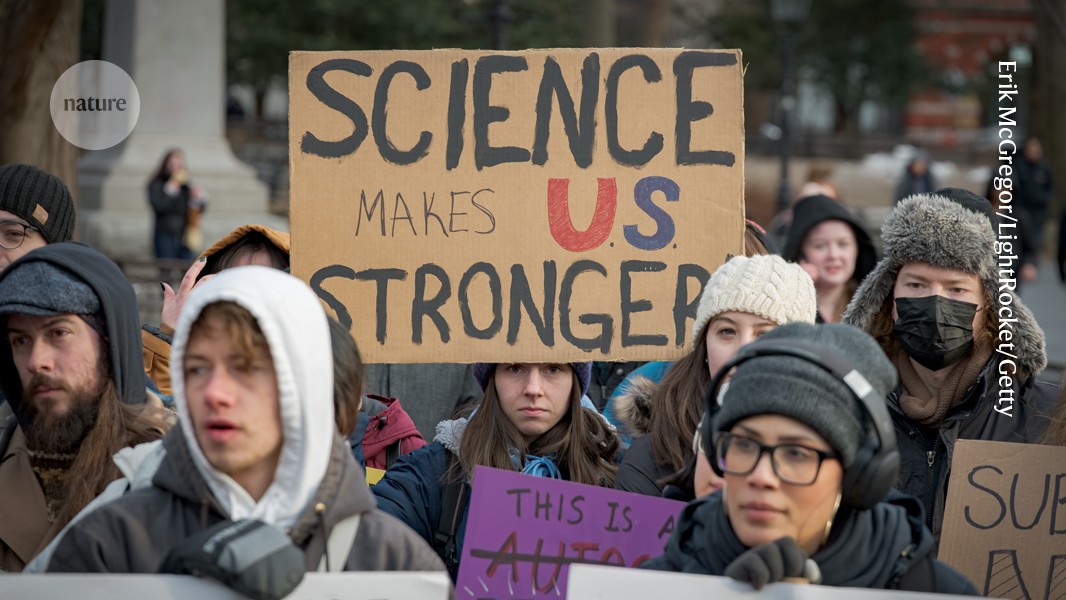The landscape of scientific research in the United States is facing unprecedented challenges. As the Trump administration implements significant funding cuts and federal scientists face layoffs, the research community is mobilizing to protect the integrity and future of US science. This article explores how researchers are transitioning into activists, organizing protests, and making their voices heard in the face of these threats.
From grassroots movements to coordinated efforts by scientific societies, scientists are embracing advocacy to safeguard taxpayer-funded research and ensure that scientific evidence informs policy decisions. The current climate demands that researchers step outside their labs and engage directly with policymakers and the public. This article delves into the strategies, motivations, and impact of this growing scientific activism.
The Unaccustomed Role of Scientist Activists
For many researchers, the shift from laboratory to protest line represents a significant departure from their training and comfort zone. Annika Barber, a researcher at Rutgers University, expressed this sentiment when she traveled to Washington D.C. to rally against proposed budget cuts. “I would rather be in lab!” her sign declared, encapsulating the uneasy but determined spirit of many scientists.
This transition highlights a crucial turning point for the scientific community. Traditionally focused on research and publication, scientists are now recognizing the need to actively defend their work and its broader societal implications. As David Meyer, a sociologist at the University of California, Irvine, notes, scientists haven’t always been the strongest advocates for their own activities, making this a critical new challenge.
Key Catalysts for Change
Several events following the inauguration of President Trump have acted as catalysts for this surge in scientific activism. The new administration’s freeze on federal hiring, potential cancellation of research programs, and proposed budget cuts sent shockwaves through the scientific community. Melissa Varga, science network senior manager at the Union of Concerned Scientists, described the initial reaction as shutdown and fear, but noted a gradual realization that “doing any one thing is better than doing nothing.”
These actions galvanized scientists to overcome their hesitations and begin organizing. From signing petitions to contacting legislators, the community began to explore avenues for resistance and advocacy. The courts pushed back on some of the initial policies, further fueling the determination of scientists to protect their work.
Collective Action and Organized Resistance
The response to these challenges has manifested in various forms of collective action. The Union of Concerned Scientists, along with 48 other scientific societies, issued a statement urging legislators to protect taxpayer-funded research. The statement emphasized the significant harm already inflicted on American science and the risks posed to public health and safety.
Researchers are also exploring new avenues for organized advocacy. Planetary scientist Paul Byrne is leading discussions about creating a new professional society to amplify the community’s voice in policy matters. He emphasized that the recent attacks on science have “catalyzed the need” for a more organized front to effectively push back against detrimental actions.
“Stand Up for Science” Rallies
A pivotal moment in this wave of scientific activism is the “Stand Up for Science” rallies, scheduled to take place in cities across the United States. Spearheaded by a group of researchers, these rallies aim to raise awareness about the importance of science and the potential consequences of budget cuts and policy changes.
Emma Courtney, a graduate student in biology at Cold Spring Harbor Laboratory, highlights the inspiring growth of this movement and the shared feeling of taking action. Sam Goldstein, who studies women’s health at the University of Florida, emphasizes the importance of connecting science to local communities. By highlighting the impact of biomedical research on regional health issues, Goldstein aims to demonstrate the tangible benefits of scientific investment.
Individual Researchers Taking Action
Beyond collective efforts, individual researchers are also finding ways to contribute to the cause. Petitions against specific policies, such as indirect-cost reductions and travel bans, are circulating widely. Professional societies are providing resources and guidance to help researchers effectively communicate with their elected representatives.
This multifaceted approach reflects a growing understanding that protecting science requires a concerted effort on all fronts. Whether through organized rallies, policy advocacy, or individual action, scientists are demonstrating a newfound commitment to defending their work and its importance to society.
Conclusion: A New Era of Scientific Advocacy
The challenges facing US science under the Trump administration have ignited a wave of activism within the research community. Scientists are stepping outside their traditional roles to advocate for funding, evidence-based policy, and the integrity of scientific research. From organizing rallies to forming new advocacy groups, these efforts represent a significant shift in the way scientists engage with politics and the public.
As the scientific community continues to navigate this new landscape, the lessons learned from these experiences will be invaluable. By embracing advocacy and making their voices heard, scientists are not only defending their work but also reaffirming the vital role of science in shaping a better future.

Leave a Reply